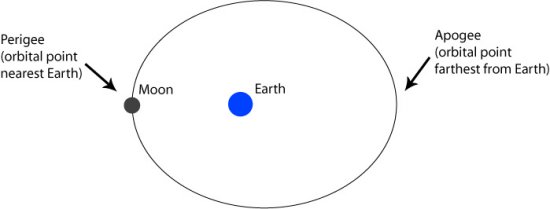By Paola Salazar
Picture this: a woman covered head to toe in dirt and debris, her hair in a ponytail under a helmet, loose long clothing enveloping her lanky body, her hand reaching up to her cheek to wipe away sweat.
She’s wearing a helmet with a big bright flashlight attached to the front, and as she approaches a crack in the ground ahead of her, she switches the flashlight on. The fissure is about 7.5 inches wide, and is the entryway to a cave system that’s about 30 meters deep.
 |
| Robert Clark/National Geographic: Lee Berger’s daughter, part of the excavation team (left). Paola Salazar/Facebook/American Association of Physical Anthropologists: The FB announcement from Lee Berger (right). |
This is one of the “underground astronauts” who flew to South Africa’s Cradle of Humankind when in 2013, paleoanthropologist Lee Berger announced the need for researchers who could fit into the cave entrance of what would then be known as the home of a newly discovered extant species related to modern humans, the Rising Star Cave.
It’s through her and a team of five other female explorers that two years later, Berger was able to announce last Thursday that after two excavations, the results of their efforts was a whopping 1,550 hominid bones--hominid meaning humans and their fossil ancestors--and what’s more, that these fossils were attributed to at least 15 members of a new species, Homo naledi.
The researchers say that the species had a brain about the size of an orange, stood about 5 feet tall, and weighed about 100 lbs. They've also revealed more on its anatomy within their paper, published on the journal eLife.
 |
| Homo naledi/Witswatersrand University |
But first of all, what exactly is a paleoanthropologist?
A paleoanthropologist is someone interested in studying, finding and/or analyzing modern human’s ancestors--human-like creatures known as hominids that, depending on how old they are, may still have some ape-like features.
Hominids come in two different genera, which is the general name for species or animals that are more closely related to each other than to other species--like how dogs are related to wolves and cats are related to wildcats under the same genera--Canis and Felis, respectively.
Depending on which anthropologist you ask, there are generally two genera for human ancestors: Australopithecus, for earlier and much older ancestors, and Homo, for the more recently extinct species and the current species, Homo sapiens. While paleoanthropologists have currently discovered numerous species related to humans, in each of the different species groups, they don’t have very many individual examples of each.
This is part of what makes the Rising Star Cave so unique--15 individuals were found! Not only that, but they found some that were children, some that were adults and even the elderly.
During the excavations back in late 2013 and early 2014, Berger and his research team shared much about the process of the excavation. They also provided an exciting day-by-day number count of the amount of bones being collected that started wowing interested parties across the globe from the very beginning (see the NatGeo blog here).
Most researchers will only release such information over time or with the actual publication itself, which can take years. However, Berger and his fellow researchers on the analysis and excavation teams strongly support open scientific communication with the public.
Still, he left one very important question unanswered: what was it? Was it a close relative to humans? Was it an australopithecine?
And now that Berger finally revealed the identity of Homo naledi...he then left many new questions for us to ponder!
So we at the Cambridge Science Festival tried getting some answers from one of the researchers, former Boston University professor, Jeremy DeSilva, who is now an associate professor at Dartmouth College in New Hampshire.
One of the new bits of mind-boggling information we got from Berger was the suggestion that the cave itself, being so far deep into a larger cave system (see here) was actually being used as a burial site by Homo naledi during its time as a living species.
 |
| National Geographic: The fossils were found in the Dinaledi Chamber--look how far down that is! |
 |
| National Geographic |
DeSilva explained that while this idea was the first of its kind for species this old (since most signs of purposefully burying the dead are about 100,000 years ago), it was the only one they could seem to fit with the evidence they have so far.
“The thing is, with cave sites, we can usually tell what the caves are used for. For example, if there are signs of bite marks on the bones found and if we find bones of other animals that are not hominids, then we know it was likely a dump site for predators. Here, we really only found Homo naledi--that’s it.” Any animal bones found were higher up within the cave system.
He also said that there was sedimentation between each different fossil group that they found, meaning that after revealing one set of bones, the next set of bones would be another layer or two of digging below.
To top it off, there’s also ways of telling if the bones got there by natural causes like landslides, or perhaps rain carried sediment further down the cave system, and the bones traveled with it. Again, there was no sign of this on the site!
Another odd thing about the site was that they weren’t able to date when Homo naledi was actually walking around on land, which is information that’s highly important for researchers trying to figure out the significance of the discovery.This is again because of the fact that Homo naledi was found by itself, or isolated, from other signs of life during its time.
See, having the bones of other animals would mean that the researchers could analyze those bones as well, trace where and when in time that animal was alive, and be able to tell from there when Homo naledi was alive.
But because there were no animals found with the Homo naledi fossils, and because cave dirt and mud is very hard to analyze for dating purposes as well, the researchers won’t be able to date Homo naledi until they’re done analyzing its bones and can “sacrifice” one to someone on the team who can analyze the bone directly to date it.
“When this guy was walking around makes a big difference,” DeSilva said. “If it was older than 2 million years old, then it could be the earliest member of the Homo genus; if it’s around 2 million years old then it’s adding to the collection of cousins to modern humans; and if it’s younger than 1 million years old then that’s huge, because it could mean that earlier versions of modern humans weren’t the only ones walking around at the time,” DeSilva explained, since right now, that is what human evolutionary history suggests.
Still, DeSilva said that going by its anatomy, he does not think Homo naledi would be younger than 1 million years old--though he admits he’d be excited if it was.
Aside from the significance of when exactly they were alive, something else that’s intriguing about Homo naledi is that whenever it is that they were walking around, they actually walked around with features that were still somewhat primitive (more ape-like), which is odd for something that has so many human-like features.
For example, their shoulders and slightly more curved fingers suggest that they were still much better at climbing than we are now. Were they climbing in trees or through caves? Was it for shelter or to escape predators?
That’s also unknown, unfortunately, according to DeSilva, who specializes in the functional morphology (how and why bones look the way they do) of foot bones and the lower limbs. He said there aren’t enough studies on the biomechanics of cave or rock climbers--meaning we don’t fully understand the range of motion that cave/rock climbers use, or what kind of forces they exert on their bones, or how those forces affect the shape and density of their bones after years of climbing in that way.
DeSilva said that while the big reveal has just happened now, they’ve already spent the last year focusing on more detailed analyses related to how Homo naledi lived: how it walked (this is what he and a few others are working on), what it ate, trying to see if they can recover any DNA, and more.
While they work towards better defining Homo naledi, the release has brought criticism from other researchers as well, due to disagreement on whether or not Homo naledi is actually a new species or an addition of specimen for an already known early Homo species.
The research team welcomes the criticism though, and has even made the fossils available online (link at the bottom) to anyone wanting to see the fossils out of curiosity or out of the desire to find evidence for whatever is believed to be incorrect in their conclusions. They did this because in addition to their open-access mentalities, they realize that some of the conclusions they made after careful consideration of what was discovered are hard to wrap our heads around--burials, new species, its features, dating, etc.
“There’s no doubt that this is a significant find,” DeSilva said. “But without the date, we can’t fully tell just how significant it is.”
“It absolutely questions what makes us human,” Lee Berger said in an interview for CNN, “And I don’t think we know anymore.”
Berger, his fellow researchers, and South African leaders and government officials suggest that one of the more important aspects about the discovery is that it introduces or reignites people’s interest in human origins, field work, and science in general across generations.
Speaking to a group of high schoolers for the World Science Festival, Berger said younger generations are crucial to making even more discoveries not just in technology, but out in the open.
“We need [these] generation[s] to get out from behind those computers and start exploring,” Berger said, “Even areas where we think we know what’s there, because there are still things to be discovered.”
Want to see the actual bones? Click here!
For more on Homo naledi, the researchers, and the excavation, click here!
Want to see and read more on how hominids move? Catch more info from Prof. DeSilva
here!
Paola is a Boston-based science journalist with a background in social and life sciences.








